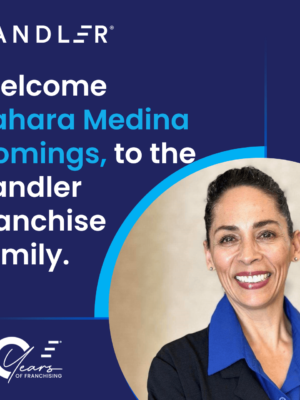How to Succeed at Sales: The Solution

How Can You Succeed in Sales?
Now that we have a thorough understanding of the problem from last week’s post, let’s look at the solution. We call it the Sandler Selling System. It involves strategically developing your sales process to build trust, set up a mutually beneficial arrangement, qualify prospects as ideal clients, and demonstrate a unique value.
Imagine if you talked only to the absolutely correct people. Imagine having the best sales conversations possible with qualified prospects who wanted to talk to you. Imagine being invited, instead of begging for appointments. Imagine no longer wasting time or money on people who will not buy. We have a saying at Sandler, “Selling things people want to buy to people who have money and decision-making authority is not cheating!” It is the way sales should be…
Do you think it would be possible to actually sell more and sell more easily? Could you actually spend less time, money and energy on business development and enjoy more revenue and profit? When you stop trying to sell to everyone, you can actually invest time and effort to build real ideal client relationships with qualified prospects. You can work smarter instead of harder.
The Sandler Selling System
The Sandler sales call should be different than any other sales call you have ever done. It should feel different to both you and the prospect. You should hear things from your prospects that you have never heard before. You should be able to “sell” without the stress and pressure of traditional sales.
Stealth Selling
Do you know why salespeople get a bad rap as pushy and obnoxious, despite the fact that there are thousands of good salespeople out there? It’s because when you encounter a professional salesperson, you don’t even realize you are being sold. They don’t come to you in a loud and blatantly obvious manner like the traditional used-car guy. Professional salespeople have normal conversations with prospects and help them make a good decision— and no one is the wiser. It is a discovery process for both parties, not just a sales presentation. When done right, selling is an honest conversation about whether there is a good fit, followed by a decision to move forward or part ways.
Opening the Meeting
The first goal of building a good working relationship is trust. Most people know that you need to build a relationship and develop trust before a prospect will open up with you. However, many salespeople completely wing it. They try to find some commonality or make some small talk about sports or the weather.
The best way to build real rapport is to match their communication style. If you are with a direct person, be direct. If you are with a fun, outgoing person, be more fun and outgoing. If you are with a very introverted, detailed person, act more subdued and present concise, accurate information. The key to real rapport is treating other people the way they wish to be treated.
You will also want to get permission to engage the prospect and set the agenda for the meeting. Both parties can feel safer and can avoid confusion if they agree up front to participate freely. This step is all about setting the expectations for both parties so everyone is on the same page. This is very important when building trust, and it also allows you to set expectations for how the rest of the process will go. People put up less defensive walls when they feel safe and know what is going to happen.
Qualifying the Opportunity
The middle steps are about prospect qualification. When do you want to know if the prospect is qualified, before or after your presentation? Is that consistent with what you are currently doing?
Determine if your prospects have a problem that you can solve; that they want it solved; and they want you to solve it. If that’s not the case, they are disqualified, and it is over for now. If they meet the criteria, though, you can move to budget.
Do they have the money, time, and resources necessary for you to fix their problem? And, are they willing to spend it on a solution to this problem? The budget can be a lot more complicated than just, “do they have the money?” Time and resources can also be disqualifiers. Do they have the time, information or other situational things you will need in order to solve their problem? If not, they are disqualified. If they do, you can move to the decision-making process.
You must understand the prospect’s decision-making process. Does the person you’re speaking with have the decision-making authority? How, when, where and why will they make their decision? If you can live with the answers, continue the process. If not, stop and disqualify them.
If you can’t discover the prospect’s pain (reasons for doing business), budget, and decision-making process, then anything you do going forward, besides walking away, is usually wasted effort on misinformed guesses. However, if you know the prospect has a problem that you can solve, sufficient budget, and you know the who, where, when, why, what and how of their decision process, then coming up with an appropriate solution should be relatively easy.
Closing the Meeting or Closing the File
The fulfillment step is where you deliver that solution and secure your sale. Most sales processes call this the presentation step; however, it could be a proposal or informal discussion depending on what fits your client’s decision-making process. You will also want to take the pressure off of the presentation. If we have correctly implemented the Sandler Selling System, fulfillment should just be a confirmation of the agreements that have been made along the way. This is not a high pressure, expensive, and rehearsed presentation attempting to stumble upon a reason for the customer to buy.
At the end of your presentation, you want to get a lot of yesses, a few noes, and nothing in between— no stalls, objections or think-it-overs. If you do get something in between, though, you probably didn’t build enough trust or perform enough discovery earlier in the sales process.
If you get a yes or a no, then you move on by setting up an ideal client or referral relationship in the post-sell step. Once you get a “yes,” don’t just grab the check or contract and get out before anything goes wrong. That doesn’t make the new client feel appreciated, and they could slip into buyer’s remorse. They also probably need a new set of expectations about what is going to happen as they transition from prospect to client. At this stage, you can also deal with any unresolved issues (like existing vendors); ask for referrals; or begin a conversation about repeat business. If you hang in there for a few more minutes, a lot of problems can be avoided. This will also separate you from traditional salespeople and position you as being a trusted advisor.
Do you believe a less, but better approach to your business development would work?
When you use the Sandler Selling System, you present only to qualified prospects so your number of presentations will go down, but your conversions from prospects to customers will go way up. It doesn’t sound that difficult or scary, does it? There is obviously a lot more to it, though, and it is easier said than done. But it’s our hope that this abbreviated explanation will help you rethink your sales process so you can avoid the pressure and distrust of the traditional sales model.
If you would like to learn more about the Sandler Selling System, visit your local training center for a free training session!
Improve your sales process and close more deals.








